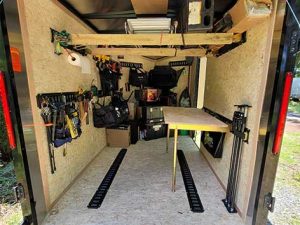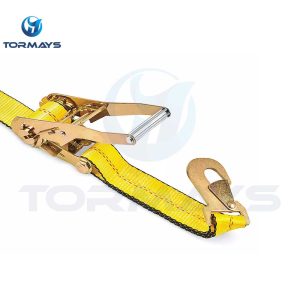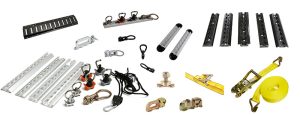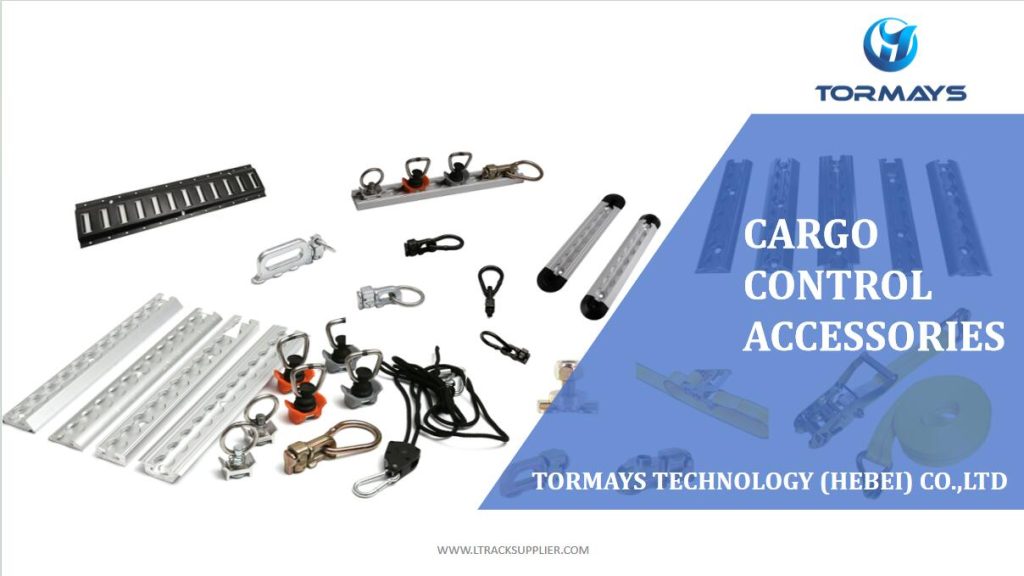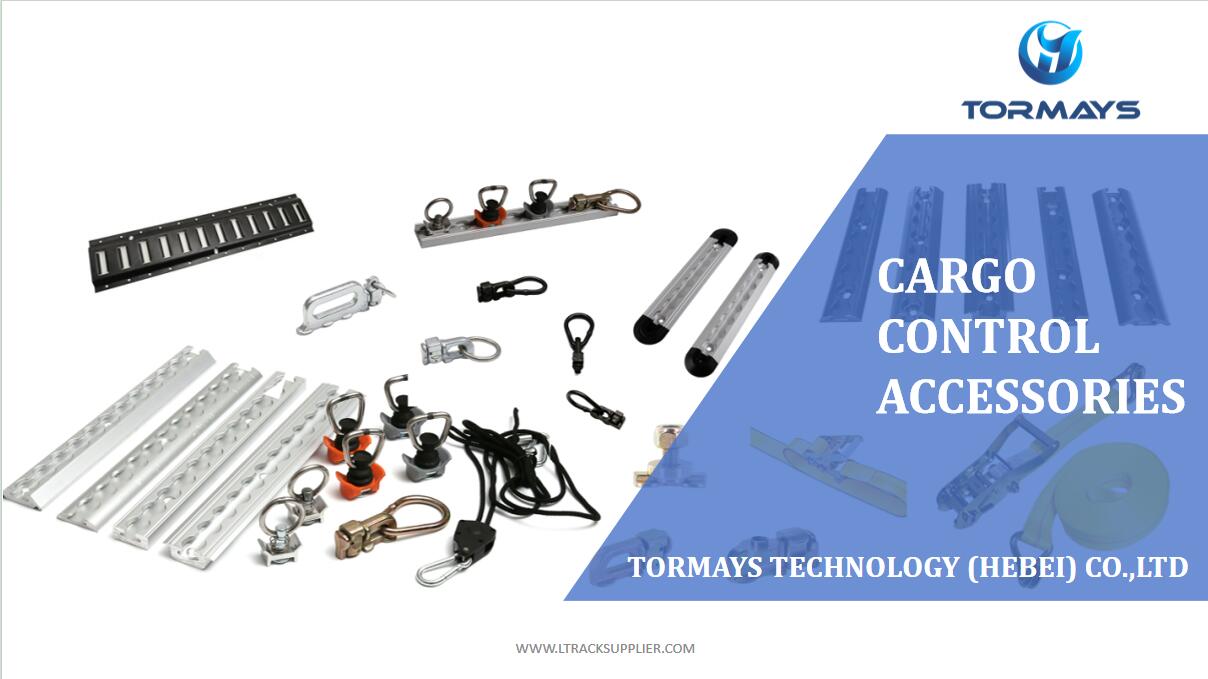In the world of transportation and logistics, securing cargo safely is crucial. Two of the most popular systems for this are the L-Track and E-Track tie-down systems. Whether you’re a truck driver, logistics manager, or an off-road enthusiast, understanding the differences between these two systems can help you make an informed choice. In this guide, we’ll cover everything you need to know about L-Track and E-Track, including their features, pros and cons, installation tips, and best-use cases.
What Are L-Track and E-Track?
L-Track and E-Track are cargo securement tracks widely used in various industries, from shipping and logistics to personal vehicle transport. Both systems consist of metal rails that provide anchoring points for straps, hooks, or other attachments, but they differ in design, applications, and overall functionality.
– L-Track, also known as airline track or logistics track, was initially used in aviation to secure seats and equipment. Its compact, low-profile design allows it to be installed in tight spaces, making it a versatile choice for smaller vehicles like vans and trailers.
– E-Track is a larger, more robust system commonly used in commercial trucking. Known for its durability and higher load capacity, E-Track is ideal for securing heavy cargo in trucks, trailers, and large storage units.
Key Differences Between L-Track and E-Track
 1. Design and Structure
1. Design and Structure
– L-Track features a slim, low-profile design with multiple round openings along the rail. This design makes it perfect for confined spaces and applications where a lower profile is preferred.
– E-Track has a wider structure with a series of rectangular slots along its length, typically arranged in horizontal or vertical patterns. This configuration provides ample anchor points for various cargo sizes and shapes.
2. Materials and Durability
– L-Track is usually made from aluminum, giving it a lightweight yet sturdy structure. This makes it easier to install and versatile for light-to-medium duty applications.
– E-Track, typically made from steel, offers greater load-bearing capacity. It’s highly durable and can withstand the rigors of heavy-duty transport, making it ideal for securing heavier cargo loads.
3. Attachment and Anchor Points
– L-Track offers flexibility with round openings that accommodate spring-loaded fittings, D-rings, and other attachments. These anchor points are positioned close together, allowing users to choose exact attachment points based on cargo dimensions.
– E-Track has numerous rectangular slots along the rail, which can accommodate a variety of attachments like ratchet straps, load bars, and E-Track fittings. The slot spacing provides flexibility in anchoring and securing various types of cargo.
4. Common Uses and Applications
– L-Track is commonly used in smaller vehicles or tight spaces, such as vans, pickup truck beds, and personal trailers. It’s also popular in recreational and off-road applications for securing motorcycles, ATVs, and camping gear.
– E-Track is better suited for larger vehicles, including commercial trucks and trailers. It is widely used in logistics and moving industries to secure heavy equipment, bulky furniture, and oversized cargo.
Pros and Cons of L-Track and E-Track
Pros of L-Track
– Compact Design: Its low profile makes it suitable for installation in tight spaces, such as small trailers or van interiors.
– Versatile Applications: Ideal for securing smaller or lighter items, including motorcycles, ATVs, and wheelchairs.
– Ease of Use: Compatible with quick-release attachments and is easy to install, especially in confined spaces.
Cons of L-Track
– Lower Weight Capacity: Generally has a lower load-bearing capacity compared to E-Track, which can be a limitation for larger cargo.
– Limited Compatibility with Heavy-Duty Accessories: Less suitable for securing very heavy items that require industrial-grade straps or load bars.
Pros of E-Track
– High Durability and Load Capacity: Made of steel and designed for heavy-duty applications, making it ideal for commercial use.
– Versatile Anchor Points: Provides multiple securement points along the rail, making it suitable for a variety of cargo shapes and sizes.
– Compatibility with Accessories: Compatible with a wide range of E-Track-specific accessories, such as load bars, tie-down rings, and cargo nets.
Cons of E-Track
– Bulkier Design: Its larger size can be cumbersome in smaller vehicles or confined spaces.
– More Complicated Installation: Requires more space and often a more involved installation process, making it less ideal for quick setups.
Installation Tips for L-Track and E-Track
L-Track Installation:
1. Identify Installation Points: Due to its compact design, L-Track can be installed on vehicle floors, walls, or even ceilings. It’s particularly useful in narrow areas or around wheel wells.
2. Prepare the Surface: Clean and mark where the L-Track will be installed. For enhanced security, reinforce with bolts and washers.
3. Install Using Bolts: Attach the L-Track using strong bolts, securing it tightly to the vehicle’s frame or floor.
E-Track Installation:
1. Choose the Right Orientation: E-Track can be installed horizontally or vertically. Horizontal installations are ideal for securing multiple items along a truck wall, while vertical installations work well for taller items.
2. Reinforce with Heavy Bolts: Due to the higher loads, secure the E-Track with heavy-duty bolts. It is often bolted directly onto metal frames or walls in larger vehicles.
3. Test for Stability: Once installed, apply pressure to ensure that the track remains stable under load.
Best Use Cases: Choosing the Right Track for Your Needs
– Personal Vehicles and Small Cargo: L-Track is generally better suited for smaller vehicles like vans, pickup trucks, or personal trailers, as it can be mounted in tight spaces without compromising functionality.
– Heavy-Duty Transport and Commercial Use: E-Track shines in commercial trucking or when transporting heavy, bulky cargo. The added durability and load-bearing capacity make it a reliable choice for freight and logistics companies.
– Off-Road and Recreational Use: For securing recreational vehicles like motorcycles, ATVs, and camping equipment, L-Track is a popular choice due to its compact size and ease of use.
Safety Tips for Using L-Track and E-Track
1. Check Load Limits: Always ensure that the track and accessories match the weight of your cargo.
2. Use Quality Accessories: Only use compatible fittings and ratchet straps with each track system to avoid damage or safety risks.
3. Inspect Regularly: Both tracks should be inspected for signs of wear, corrosion, or damage to ensure ongoing safety.
Conclusion: Making the Final Choice
When it comes to choosing between L-Track and E-Track, your decision should be guided by your specific cargo needs, vehicle size, and weight requirements. If you frequently transport heavy items in a commercial truck, E-Track may be the better choice due to its higher load capacity and versatile anchoring options. On the other hand, L-Track is an excellent option for personal or recreational use, thanks to its low profile and ease of installation in smaller spaces.
For logistics professionals and casual users alike, both L-Track and E-Track provide valuable solutions to ensure safe and secure cargo transport. By understanding their unique benefits, you can choose the right system that meets your transport needs and provides peace of mind on the road.

